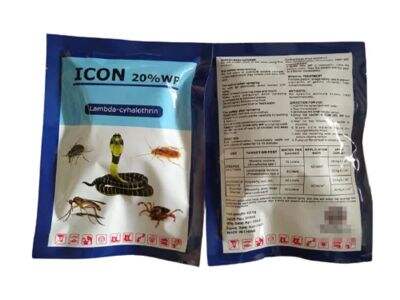Lambda-cyhalothrin is widely used pesticide for protecting crops from harmful insects. Ever wondered how long it lingers in the soil and on the crops after it is applied? Let's find out together!
How long does lambda-cyhalothrin last?
Since Lambda-cyhalothrin is a pesticide you spray on crops, it can remain in the soil for some time. This period of time is referred to as persistence. It varies from just a few days to possibly a year, depending on soil type, weather, and pesticide application rates.
Which Factors Can Influence the Duration of Lambda-cyhalothrin?
Soil type plays a very important role in how long Lambda-cyhalothrin persists in soil. In sandy soil, for example, the pesticide could degrade more quickly than if it were in clay soil. For one thing, adding more pesticide can affect how long it remains.
Environmental Conditions for Lambda-cyhalothrin
Soil types, environmental factors such as temperature and moisture, as well as factors like whether Lambda-cyhalothrin is applied to the soil or plants, can affect the rate at which it degrades in the soil and in plants. For example, warm and wet weather can cause the pesticides for agriculture to degrade more quickly, while cold and dry weather can extend its life.
Testing Lambda-cyhalothrin Over Time
Regular monitoring for Lambda-cyhalothrin in the soil and the crops will be required in order to ensure safety of our food and the physical environment. Testing can tell us how much is left and whether it’s safe to eat.
Once again Lambda-cyhalothrin to the rescue
This good practices can help farmers to manage Lambda-cyhalothrin and safe food. This means using the correct dosage, spraying at intervals and switching up their pesticide chemicals so they don’t accumulate in soil. Proper waste disposal and ensuring the spray isn’t drifting can help protect the environment as well.
 EN
EN
 AR
AR
 FR
FR
 EL
EL
 HI
HI
 IT
IT
 PT
PT
 RU
RU
 ES
ES
 TL
TL
 IW
IW
 ID
ID
 UK
UK
 VI
VI
 SQ
SQ
 TR
TR
 FA
FA
 AF
AF
 MS
MS
 SW
SW
 AZ
AZ
 UR
UR
 BN
BN
 HA
HA
 IG
IG
 JW
JW
 KM
KM
 MN
MN
 SO
SO
 ZU
ZU
 MY
MY
 KK
KK
 TG
TG
 UZ
UZ
 AM
AM
 KU
KU
 KY
KY
 PS
PS
 SN
SN
 XH
XH

